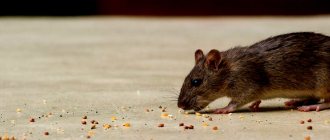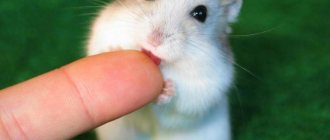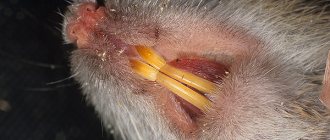I watched a 2-hour lecture by Moscow State University professor Vyacheslav Dubynin about the influence of sleep on the brain and the brain on sleep. Below the cut is a summary of 20 minutes of reading. If you try to compress it to 1 minute, you'll end up with something like this:
- How much sleep do you need? Individually, from 6 to 10 hours is within normal limits for an adult.
- Sleep hygiene - rules for falling asleep and staying asleep normally. (Just an anchor to the slide list).
- The biological clock is a real physiological process that is guided by circadian rhythms. Changing time zones and working shifts “looses” the mechanisms of the biological clock.
- You have to go to bed no later than... - bullshit. Just at the same time.
- If you sleep during the day, buy yourself some good curtains. Melatonin correlates with light. If the sun shines into your eyes (even closed ones), you are not fully resting.
- How long can you stay awake? An adult will survive up to 4 days without irreversible serious consequences.
- Sleep is divided into slow and paradoxical phases.
- The slow phase of sleep is about cleansing the body. If there is no slow phase of sleep, immunity, endocrine system, metabolic processes and homeostasis go haywire. Experimental rats die after 15-20 days without sleep from inflammation when intestinal bacteria enter the blood.
- The paradoxical phase of sleep is involved in information processing. In terms of the level of electrical activity of the brain, it is close to the state of active solution of complex problems.
- When is the right time to wake up? On the transition from the paradoxical phase to the slow one.
- How to determine by eye when you can wake up. When a person was lying quietly and began to toss and turn, you can wake him up.
- Caffeine prevents the body from receiving a signal of fatigue, but does not provide additional energy.
- How to gently slow down an overexcited nervous system. Phenobarbital in small doses - Corvalol, Valocordin, Valoserdin. Antihistamines.
Vyacheslav Dubynin - Doctor of Biological Sciences, Professor of the Department of Human and Animal Physiology, Faculty of Biology, Moscow State University.
M.V. Lomonosov. Skip to video We spend ⅓ or ¼ of our lives in a sleepy state, it’s interesting to imagine what this is for, what phases it consists of, how we can influence it from a physiological point of view.
Nervous system
The brain stem, ancient, evolutionarily early emerging zones. They are responsible for breathing, controlling heart rate, etc. Sleep and wakefulness are for the most part also associated with these structures.
The brain stem includes:
- Medulla
- Bridge
- Midbrain
- Diencephalon (between the hemispheres)
What is marked with yellow circles on the diagram is the most important centers of sleep and wakefulness.
This is if we talk about the macro level. And at the micro level, our brain is cells, and their functioning is highly dependent on the state of the sleep and wakefulness centers. This is something like a power supply.
A person has needs, among them Academician P.V. Simonov identified vital needs (vital):
- food (energy, building materials)
- drinking (water-salt metabolism)
- safe (passive and active defensive)
- homeostatic (respiration, blood circulation, thermoregulation, sleep, wakefulness)
- saving energy (“laziness reflexes”)
- grooming (“body care”)
Homeostasis is the constancy of the internal environment of the body.
Pressure, the amount of oxygen and microelements, all this is included there. And to maintain homeostasis, you need to sleep. Prolonged sleep deprivation causes disruption of homeostasis and stress, and can be fatal.
Sleep, first of all, equals rest. But that's not all. The ancient Greeks understood this. In their pantheon there were 2 gods of sleep - Hypnos and his son Morpheus. The first is the god of sleep, the second is the god of dreams. The Greeks understood that sleep can be rest, or it can be a state in which something chaotic happens, there are “prophetic” or creative dreams. And there are nightmares and “pseudo-prophetic” dreams. The Olympians sometimes used Morpheus to intimidate some hero so that he would not go where he shouldn’t.
We will talk about both the state of sleep and the state of dreams. But let's start with something simple.
Fact 1 Teeth grow continuously
For this reason, it is vital for them to constantly chew on something. If you do not allow rodents to grind down their fangs, they can grow up to 12 centimeters, which will result in the death of the animal. Therefore, they gnaw on almost everything: it will not be difficult for them to gnaw a hole, for example, in a concrete wall or a steel water pipe. Here is a list of materials that cannot resist toothy pests:
- Concrete;
- Metal (except iron, as well as especially durable metals);
- Tree;
- Stone;
- Plastic and plastic.
The only material that in its natural form is too tough for our little animals is glass.
Source
How much sleep do you need
The answer is very individual.
It depends on the set of genes, immunity, age, and the state of your neuronetwork. There is a separate scientific field that deals with sleep - somnology. Somnologists debate a lot about the amount of sleep. On the slide below are recommendations from the American National Society of Sleep Medicine:
And counting sleep by hours is not very correct. Sleep is divided into 1.5-hour cycles and it is more correct to consider sleep as cycles. Those. 4-5-6 cycles are within the normal range for an adult. Less than 4 cycles - the body does not have time to rest, more than 6 cycles - problems may begin, for example, with the lymphatic system. There is also sleep hygiene. To ensure good sleep, it would be good to follow the following rules:
These are already the recommendations of Russian somnologists. The rules are simple, but they require regularity, because... Most people have problems not with sleep itself, but with falling asleep.
The brain has biological rhythms. To fall asleep easily, you need to get up and go to bed at approximately the same time. All these life hacks that 1 hour of sleep takes 4 hours to midnight is rather a poetic exaggeration. There is no scientific evidence for this. The only thing that matters is that your bedtime is the same, because... Our clocks don't adjust very quickly.
If you have problems falling asleep, then you need rituals to let your brain know that sleep is coming soon.
It is important to sleep in a specific room. Bed for sleeping. If you work or eat there, your brain stops understanding what you should be doing there. You can't skimp on a mattress. These 6-7 hours every day are very important for your musculoskeletal system.
Before going to bed, reduce the lighting. This way you also let your brain know that you are going to sleep soon. Smartphones and any screens before bed are a bad idea; they don't let your brain know you're getting ready to sleep.
Food. A light snack is fine, but don't put anything dense in your stomach. Everyone will rest, but the stomach will have to work. It's somehow unfair.
Substances (caffeine, alcohol, nicotine, etc.)
Limiting daytime sleep. During the day you can sleep differently. Either 15-20 minutes to freshen up, or a full cycle. But if you sleep a full cycle during the day, then subtract it from your night sleep. The worst option is to sleep for about an hour. Such a daytime nap can only slow down your brain, and not invigorate it as intended.
A little about the physiology of rats:
- Rats are nocturnal animals, but can adapt to their owner's regime
- The average lifespan of rats is 26-40 months (2-3 years)
- The average weight of an adult male is 300-500 g
- The average weight of an adult female is 225-325 g
- Body temperature 37.5-38.5 C
- Pregnancy 21-23 days
- Litter averages 6-12 rats
- Weight of the baby rat at birth is 4-6 g
- Puberty occurs at 6-8 weeks
- Approximate food intake of an adult rat per day is 15-20 g
- Approximate water consumption per adult rat per day is 22-33 ml
The biological clock
All animals and plants that live on the surface of the planet adjust their lives to the cycles of day and night and seasonality. We are tropical monkeys by origin, who lived where seasonality was weakly expressed. Those. We are mainly influenced by day and night. On average, these are intervals of 12 hours.
Circadian rhythms are also called circadian rhythms. And depending on the time of day, serious changes occur in the nervous and endocrine systems.
They have been working with the endocrine system for a long time, analyzing blood or saliva for the content of the hormones cortisol and melatonin. Cortisol is secreted by the adrenal cortex and is responsible for metabolism. When you're stressed, cortisol goes through the roof, but that's a slightly different story.
Cortisol levels typically peak between 11 and 1 p.m. For many, this is the most productive time to work.
Melatonin is a sleepy hormone secreted by the pineal gland. And melatonin levels correlate with the level of light that our visual system perceives. Its peak occurs around 2 a.m., and then cortisol begins to rise again.
If you go to bed late, try to do it before 3 am so that the concentration of melatonin in your body is higher than the concentration of cortisol.
The hypothalamus, the lower half of the diencephalon, is in charge of all this. Neural networks were discovered in it, which are essentially our biological clock - the suprachiasmatic nuclei of the anterior hypothalamus. There are cells there that are active during the day; they transmit signals to the wakefulness centers. There are cells that are active at night; they transmit signals to sleep centers.
What a name.
Supra is the opposite. Chiasma - optic nerve. The optic nerve leaves each eye and crosses before entering the hypothalamus. It is opposite these nerves that the suprachiasmatic nuclei (SCN) are located.
The diagram on the right is the visual centers of our brain. The most ancient visual center is the suprachiasmatic nuclei. They determine the overall level of illumination. They form a biological rhythm in response to the circadian rhythm. Having formed it, they can steadily maintain this rhythm. A small child is set to a 24-hour rhythm, but in the future the person will maintain this rhythm, even if there are problems with lighting.
It works very similar to a clock. The arrows on the biological clock can be adjusted, but it takes several days to adapt. This joke is called jetlag, many have encountered it. It occurs if you take and fly from Moscow to Vladivostok. For a couple of days you will readjust and sleep at the same rhythm.
Jetlag is a serious stress and an impossible situation for our evolutionary past. But the clock is adjusting. If you do this often, you can disrupt the synchronization of the neurons of the suprachiasmatic nuclei. Such adjustments are caused not only by long-distance flights, but also by shift work.
Next to the suprachiasmatic nuclei is the most important sleep center VPLO - the ventrolateral preoptic nucleus.
Here is an overloaded diagram of how the neurons of the suprachiasmatic nuclei maintain rhythms.
It turned out that even a single neuron in the suprachiasmatic nuclei is capable of doing this. This occurs due to the fact that in the cytoplasm of this nerve cell there are cascades of biochemical reactions that have a daily cycle. Certain proteins and certain genes are key.
Don’t be alarmed, if anything, the Nobel Prize was awarded in 2021 for the discovery of this mechanism of daily cycles. True, this mechanism was first found in the Drosophila fly, and then in mammals.
Sleep phases
There is a resting phase and a dreaming phase.
The fact that these different conditions were suspected at the end of the 20th century, when they learned to write an electroencephalogram (EEG) well. EEG is the total electrical activity of the nerve cells of the cerebral cortex; in order to record it, you need to attach sensors to your head in certain places:
α-rhythms, β-rhythms, δ-rhythms, θ-rhythms were identified. It turned out that different phases of sleep are characterized by different rhythms.
,
EEG is the total electrical activity of nerve cells, and for it to be beautiful, the cells must work synchronously, i.e. stand idle Beautiful waves on the EEG are an idle state of neural networks, when there is no specific information, but a certain neural circuit is in a state of readiness.
Alpha rhythms were the first to be discovered; their frequency reflects the active functioning of our sensory systems. The sensory systems are actively working, but there are no real visual or auditory signals. When a person is in a state of quiet wakefulness
- sits with his eyes closed and does nothing - we will record a beautiful alpha rhythm.
Beta rhythms are faster, their frequency reflects the transmission of a signal within the cortex of more hemispheres - mental load. You were just thinking about something difficult and then you relaxed. At this moment you can record a beautiful beta rhythm.
If most nerve cells are engaged in specific tasks, no waves are visible at all. A low-amplitude, almost flat curve is written. The rarer the waves and the larger their amplitude, the lower the brain activity.
Theta and delta rhythms are written when the brain increasingly enters a sleepy state.
Theta rhythm is about falling asleep.
Delta rhythm - interaction with deep sleep centers. This is the state of rest.
During the transition from wakefulness to sleep, the waves on the EEG become more rare and high-amplitude.
In the alpha rhythm there are 10-12 waves per second, and in falling asleep there are already 1-2 waves. The presence of delta waves indicates a state of sleep/rest.
If an adult has delta waves while awake, this may indicate the occurrence of a tumor, for example.
If you continuously write an EEG during sleep, the delta rhythm of sleep is replaced by a strange picture. The person continues to sleep, sometimes it is even more difficult to wake him up during this phase, but a rhythm appears on the EEG, as if the brain is actively processing information. Not just alpha and beta waves, but sometimes almost flat pieces.
The paradox is that a person is asleep, but the brain is awake. So this phase of sleep was called “paradoxical sleep.” It is also called the “rapid eye movement” phase, REM sleep, or “rapid eye movement” REM sleep.
If a person is awakened during this phase, he will often say that he was dreaming.
It gradually became clear that during this phase, a person processes accumulated information. A clear division appeared: sleep-rest, and sleep-dreams. And the purpose of a dream is the processing of accumulated information.
The most important picture of the entire lecture:
The columns are one full human dream. Horizontal time in hours. Green color is delta sleep or slow wave sleep. Red bars - REM sleep.
The duration of the cycles is about 1.5 hours. The ratios of delta sleep and REM sleep change. In the beginning, the first 2 cycles, it is more important to rest. Afterwards, the brain focuses more on processing the accumulated information, not only fresh and relevant information.
When is the right time to wake up?
At the end of the second column.
When brain activity is almost awake. If you go into the green phase, especially where the greenest bars are, it is very difficult to wake up a person, and it will be long and difficult for him to wake up, because... the brain is in a very “slow” state. How do devices that promise to wake you up at the right time work?
The most accurate are rag pads with eye movement sensors. As soon as you stop actively moving your eyes, it’s time to wake you up.
Dreams are often emotions. Emotions quicken your pulse. Smart watches will be able to correctly wake you up based on your pulse.
During the REM sleep phase, a person does not move. When a sleeping person was sleeping and sleeping, and suddenly began to stir, you can wake him up. This is done by devices that simply listen to you sleep. But there is no accuracy here.
Our main center of wakefulness is located inside the bridge. There are cells there that collect signals from all sensory systems. Any of our sensory systems can influence our state of wakefulness: the alarm clock rings, the light shines in our eyes, they gave us ammonia to sniff, we shook our shoulder.
Nerve cells of the reticular nuclei of the pons (upper right corner of the picture above, A-block). When they were discovered and described in the 20th century, they could not understand what kind of cells they were and why they reacted to everything. And this turned out to be the main center of wakefulness.
Key sleep signals travel to the midbrain. Midbrain neurons produce serotonin (5-HT). NREM sleep is influenced, among other things, by serotonin. We maintain a little muscle tone.
When we enter REM sleep, the locus coeruleus, which is located inside the pons, releases the molecule norepinephrine as a neurotransmitter. Norepinephrine blocks serotonin, blocks muscle tone, but allows the cortex to move into a more active state.
The fact that norepinephrine blocks muscle activity is very important. If you don’t block the muscles, dreams provoke a reaction, your arms and legs will run and grab. It happens, but it is pathological.
By the way, sleepwalking or somnambulism is associated with slow-wave sleep. Residual brain activity causes the person to move slowly and can be put back down.
But fighting during sleep is a violation of the paradoxical sleep phase.
Content
Reviews about the white rat with red eyes and its contents are the most enthusiastic. Those who once got such a pet fall in love with it once and for all. The owners of the rats say that their pets are unpretentious. You just need to follow some rules regarding their content. What are the rules? We'll talk about them below:
- Never keep rats of different sexes together. Regular birth of offspring is guaranteed. A female rat will not last long, constantly giving birth to babies, and there are not enough good hands for everyone.
- The minimum cage size for one rat is 40 x 60 x 50 cm. This is the minimum; a more spacious cage is ideal for a pet. If we equate these dimensions to human minimum living conditions, then this is 9 m2. Do you agree that it is difficult for a person to live in a nine-meter room where he needs to eat, sleep, and go to the toilet? It is also difficult for a rat to live in minimal conditions.
- At a pet store, sellers may recommend purchasing a plastic cage - “Dune”. Don't agree, take a regular one, with a plastic tray and a metal top. Just make sure that the distance between the rods is narrow. Otherwise, the pet is able to escape from the cage.
- Buy a heavy earthenware feeder or a metal hanging one. The rat turns over simple plastic bowls in no time. Particularly smart comrades send a light plastic bowl on an unplanned flight around the cage. Why rodents find it more pleasant to eat food containing filler is unknown. But the fact remains a fact.
- Take a plastic drinker with an inner ball, which is easily attached to the cage. When purchasing, just say that you need a hanging plastic water bowl for a rat.
- It is better to buy corn filler. It does not cause allergies and easily absorbs all odors.
- Clean the cage every 4 days. More precisely, the filler is changed within this time frame. Complete cleansing occurs once a week. The cage is washed with soap or powder, thoroughly doused with boiling water, and allowed to dry. The house, feeder and drinking bowl are washed in the same way.
- Buy a wooden house. It is definitely needed in a cage, because the animal sleeps there.
- It is advisable to purchase a hammock for rats. These rodents respect such hammocks.
- If your pet is lethargic, refuses food and water, or behaves strangely, this is a reason to contact a veterinarian.
slow sleep
Delta sleep is sleep for rest. At this time, the brain consumes the least energy. This allows the entire body to replenish its supply of nutrients and cleanse itself of unnecessary things. For example, the body will supply glucose and remove urea at its usual pace, but due to a decrease in brain activity, homeostasis will be restored.
But everything turned out to be a little more complicated.
In 2012, an effect was discovered that was called the “glymphatic system of the brain.” “Glymphatic” is made up of “lymphatic” and “glial”.
The lymphatic system helps the circulatory system remove excess fluid from our tissues.
When we look at the brain, we see billions of neurons. But they are not hanging in emptiness. All spaces between neurons are filled with auxiliary cells - glial cells.
Glial cells support neurons and create mechanical packaging for them. They isolate neurons from each other so that neurons touch only in the right places - synapses.
Glial cells surround blood vessels. Those. the substances brought by the blood first pass through the glial cells, and only then reach the nerve cells - the blood-brain barrier.
In the waking state, the spaces between glial cells are very small.
In the state of slow-wave sleep, the volume of glial cells is 20% less. This is due to norepinephrine (which prevents us from fighting during dreams).
There is a lot of norepinephrine during wakefulness and REM sleep, but little during slow-wave sleep. When norepinephrine is low, the volume of glial cells decreases and gaps appear. Due to this, the movement of tissue fluid from the arteries to the veins is more intense. This increases the “drainage function” of the brain.
Here's a more detailed drawing to illustrate the processes above:
If you don’t sleep with slow-wave sleep, the brain is not cleaned as well, and all sorts of bad things accumulate, including beta-amyloid, a risk factor for Alzheimer’s disease.
For many years, Russian researcher Ivan Nikolaevich Pigarev developed the visceral theory of sleep.
Apparently, this is adequate to reality and is directly related to the problems arising from insomnia.
Visceral - aimed at internal organs. According to the visceral theory, during wakefulness, information from the internal organs does not pass to our brain. While we are awake, the brain needs to regulate breathing, coordination, movement, and process information from all sensory centers. He has no time for internal organs. And the brain postpones this processing until the slow-wave sleep phase. During the slow-wave sleep phase, internal organs can “reach out” to the brain and receive regulatory signals.
It is assumed that our body itself does an excellent job of regulating the condition of its internal organs, but for this it needs time that it can do this without being distracted by a bunch of other things.
The immune, endocrine, respiratory, cardiovascular, excretory systems, everything is tied to the guiding signals of the nervous system. If there is a total lack of sleep, then problems arise in the functioning of internal organs, because... they were not given guidance signals in time. Homeostasis begins to storm.
Those. First of all, clinical lack of sleep worsens the functioning of internal organs.
If an experimental rat is deprived of sleep, it dies by the end of 3 weeks.
And not from problems with the brain, but from problems with the cardiovascular system and gastrointestinal tract. The most common cause of death in animals that are deprived of sleep for a long time is total inflammation of the intestines. Against the background of which the intestinal microflora breaks into the blood, general inflammation occurs - sepsis and death.
If you haven't slept for a week, you probably won't die from a stroke. But a problem with sepsis may arise. This is such a paradox.
Here is a picture that shows how sleep deprivation experiments are carried out on animals:
An EEG is recorded on the rat. When it becomes clear that the rat is falling asleep, the carousel is turned, the rat falls into the water and wakes up. This way, scientists can study the effects of deprivation of REM sleep, slow-wave sleep, or no sleep at all.
In the middle of the 20th century there were desperate people who conducted experiments on themselves.
In 1959, 33-year-old Peter Tripp spent 8 days (201 hours) awake while taking amphetamines. For several more years he felt the consequences of his experiment. But he got into the Guinness Book of Records.
In 1964, Randy Gardner, 17 years old, went 11 days (264 hours) without sleep. Apparently, this young man did without amphetamine and did not have any particular consequences, he just slept off and that’s all. But this was the last straw for the Guinness Book of Records. After this incident, they did not accept records of “no sleep for n-hours.”
The slide contains more details about the progress of both experiments:
Paradoxical dream
We spend approximately 20% of our sleep time in the REM sleep stage.
If a person is woken up at this stage, he will most likely say that he had a dream. But he most likely will not remember dreams at other stages. In the final stages of paradoxical sleep, dreams are usually light. Nightmares are more common in the early stages, and they can be so overwhelming that they jolt you out of sleep. About one in 15 people have dreams every day.
Creative people value their dreams very much. On the slide are sketches of the dreams of Salvador Dali and Marc Chagall:
Back in the 19th century, Sechenov said that dreams are unprecedented combinations of experienced impressions.
First of all, the brain deals with the information of the day; the structure of the hippocampus helps it with this. And then you can deal with something that has been accumulated almost throughout your life.
If you clearly set a task for the paradoxical sleep system before going to bed, then it is able to continue solving this problem in a dream, and you will find a solution. Or you will wake up with a ready-made solution.
Anecdote on the topic:
At first, Pushkin dreamed of the periodic table, but he did not understand anything.
In order for information to be recorded in long-term memory, you need to sleep correctly and allow the paradoxical sleep phase to work with the received data.
First, the information of the current day is “written” to a structure called the hippocampus. And only then is it rewritten throughout the cerebral cortex. Essentially, the hippocampus is operative memory, and the cerebral cortex is long-term memory. And rewriting, apparently, occurs during paradoxical sleep.
Also I.P. Pavlov understood that for effective learning the brain needs the right state:
As you can see, in addition to the state of the brain, it is important that the information is also meaningful to you. Otherwise, the antispam system will work, which does not need anything extra.
By the way, the “edge effect” works well. We remember better information that was received at the beginning of the day and just before bed.
This is what our hippocampus looks like from different angles:
Translated from English, hippocampus means “seahorse”. Neuroanatomists were apparently poetic people.
The hippocampus contains neural networks that are capable of capturing some information almost instantly. For example, in the next 10-15 minutes you will definitely remember the word “hippocampus”.
The hippocampus has interesting properties:
A small memory capacity, for example, does not allow us to perceive the first 10 minutes of a lecture and the end of the second hour of a lecture equally well.
New information is stored during the “working day”, and rewriting partly depends on the emotional background. Sometimes we memorize information that we would like to forget and cannot remember the necessary information. But this is a slightly different topic.
During rewriting, processes of generalization and association with other fragments of your experience take place. The more interesting your day was, the more REM sleep you will have that night.
On average, children have longer REM sleep than adults, apparently because... the world is new to them.
Diseases of decorative rats
Rats, like many other decorative rodents, can be overtaken by a variety of diseases, some of which are dangerous for humans. The causes of illnesses can be parasites, bacteria, viruses, fungi.
The following diseases are common:
- ectromelia (also known as smallpox) is a virus that, when it falls into the animal’s body, multiplies on the skin and internal organs (in the chronic form, ulcers, swelling and spots appear on the skin, which ends in tissue necrosis and gangrene; in the acute stage, there may be no symptoms, but the rat will die within 24 hours);
- listeriosis is a bacterial infection that is also dangerous for humans (infection occurs through bedding, food and cage accessories); body temperature rises, coordination is impaired;
- salmonellosis is a bacterium manifested by apathy, diarrhea, intermittent breathing, and without treatment it turns into edema, paralysis and irreversible organ damage (treated with antibiotics - chloramphenicol, biseptol, sulfadimethoxine);
- pneumonia - damage to the respiratory system by pathogens coronavirus and Sendai virus, manifested by discharge from the nose and eyes, sneezing, difficulty breathing, redness of the eyes, swelling of the throat, apathy, weight loss (treated with a course of antibiotics, anti-inflammatory drugs, immunomodulators and vitamins);
- mycoplasmosis - a genital, respiratory or mixed infection, manifested by enlarged lymph nodes, nasal discharge, pneumonia (the genital form may be asymptomatic);
- coccidiosis - a disease of the intestines and liver with frequent digestive disorders, jaundice, exhaustion;
- scab and actinomycosis are a fungus that enters the rat’s body after flea or tick bites, as well as through contaminated food (symptoms are ulcers, grayish blisters, scabs on the skin, hair loss, abscesses on the mucous membranes in the mouth).
Many diseases can be avoided if you wash your hands after handling your pet, give proven food and keep the animal’s cage clean.
Now you know how to care for a rat at home. Following all the recommendations is not very troublesome, but your smart animal will definitely thank you with its attention and love.
Chemical substances
There are 90 billion nerve cells in our brain; they come into contact with processes, forming contacts - synapses. At synapses, signals are transmitted by neurotransmitters. These substances, called neurotransmitters, are important for understanding how the brain works.
And these same substances are the basis of psychopharmacology. With the help of them we try to control or correct the functioning of the brain
The main mediators of the central nervous system:
Glutamate
- stimulating, transmits the main information flows in the brain, is associated with sensory, memory, and preparation of movements.
Gamma-aminobutyric acid (GABA)
- inhibitory, blocks information flows, provides motor control, emotional control, sensory control (when we can listen to one voice and not turn to another).
Because GABA is the main inhibitor; its role in falling asleep is great. If we shift the balance towards more GABA, we fall asleep more easily.
More often the opposite problem occurs when the concentration of glutamate is higher. In adults it is nervousness and insomnia; in children it sometimes looks like ADHD.
The most serious excitation-inhibition imbalance is epilepsy.
To shift the balance in favor of inhibition, drugs that activate GABA synapses are used.
Classic sleeping pills - barbiturates, benzodiazepines.
Phenobarbital is one of the well-known and over-the-counter molecules that is part of Corvalol, Valocordin.
Valerian has a similar, but weak effect.
Sometimes they use pure GABA in tablets, but it hardly passes into the brain, and if it does, it does not work as an inhibitory neurotransmitter, but rather as food for nerve cells. So it's more of a nootropic than a sedative.
Serotonin is also important for triggering a sleepy state. Poor functioning of the serotonin system is a prerequisite for depression and insomnia.
You can help a little with drugs containing the molecule from which serotonin is made. Again, this is the level of dietary supplements and nootropics.
Our body produces glutamate and GABA easily and in any quantity.
To make serotonin, you need a tryptophan molecule. We get tryptophan from food proteins and cannot make it ourselves. Taking it in tablet form can have a mild dietary supplement effect and improve sleep. Manufacturers’ positioning of tryptophan-containing drugs as antidepressants is clearly overkill.
The specificity of dietary supplements is that they do not help everyone, but if they help, they allow you to gently correct some problem.
Tryptophan in our nerve cells is converted into 5-hydroxytryptophan, and then into serotonin. 5-hydroxytryptophan is also offered as a supplement. It works a little more reliably, but still remains a dietary supplement.
A mediator with the opposite effect, i.e. interfering with sleep is called norepinephrine.
A computer game, a parachute jump, or a sports victory are norepinephrine types of pleasure.
Molecules similar to norepinephrine also interfere with sleep. For example, some cheese components. Norepinephrine is formed from the amino acid tyrosine. And the bacteria that make cheese can convert tyrosine into tyramine. And tyramine is similar to norepinephrine.
Sleep and wakefulness centers
- The main center of wakefulness is in the reticular nuclei of the pons.
- The two sleep centers are the VLPO of the hypothalamus and the area of the midbrain associated with the release of serotonin.
- Next, the locus coeruleus is responsible for norepinephrine, an auxiliary center of wakefulness.
- Suprachiasmic nuclei, also known as biological clocks.
- Reticular nuclei of the medulla oblongata, more about them below.
In point 5 there is an auxiliary sleep center that responds to the chemical composition of the blood. When we are sick, tired or have eaten heavily, the reticular nuclei send appropriate signals and increase the sleepy state.
Here's how all these sleep-wake systems are configured:
Our main center of wakefulness, the pontine reticular nuclei (yellow block), causes general arousal in the brain.
The main sleep centers (blue block in the center) constantly compete with it, which inhibit the main wakefulness center.
The main center of wakefulness strikes back through the locus coeruleus (blue block) and releases adrenaline. Norepinephrine can also react to stress, so this may also keep us awake.
We also add the reticular nuclei of the medulla oblongata (blue block on the right), which react to the chemical composition of the blood.
Plus, the suprachiasmic nuclei, which are the biological clock (green block), are affected.
Plus, all sensory systems (white block on the top left) can transfer us from a sleepy state to an awake state thanks to the activation of the reticular nuclei of the pons.
This is not the most complex system of the body. There are many more areas in the memory system or motor system. But the system is still complex and includes various factors.
For example, falling asleep instantly is narcolepsy. This is a pathology, you can’t do that. Otherwise you will fall asleep anywhere and a predator will eat you. But you need to wake up quickly; if a predator comes, you need to jump up and run.
Why do breeders ask not to give rats as gifts for the New Year?
Now on the eve of the New Year, and next year according to the eastern calendar is the year of the Rat, many are looking for rats as a gift. But Marina and the breeders ask not to do this, because the purchase of pets should be conscious.
— A person himself must want to get a rat, prepare for this, find all the information on the animal. If the child’s parents are against such a gift, they can take the animal to the trash heap. And a rat in winter will die on the very first day, since it is not adapted to live on the street: it will not know where to find food, it will freeze, crows, cats and dogs are dangerous for it.
Marina says that in past years, after the holidays, she often found decorative rats on the street.
“They can simply put a cage with a rat on the street, because they treat the animal as a toy.
Now in Belarus, rats in nurseries cost about 40 rubles, in pet stores and markets - even cheaper.
Melatonin
Melatonin is controlled by the hypothalamus. The release of melatonin is inhibited by visual signals. Even through the eyelids, bright light prevents the pineal gland (the piece of the brain where the black cursor is pointing in the picture) from releasing melatonin.
If your regime is biased towards sleeping during daylight hours, then take care of thick curtains.
Melatonin disperses throughout the body and reduces the activity of all systems: the heart beats slower, intestinal function slows down, and body temperature drops. Plus it is an important antioxidant.
For sleep problems, it is recommended to take melatonin tablets. This substance also has a mild effect, at the level of a dietary supplement. If you often change time zones, understand the importance of melatonin. As you age, problems with melatonin production may arise.
Breeds of domestic rats
Today there are 137 species of domestic rats, as well as 570 subspecies . And each of them is interesting in its own way. The most common:
- breed of decorative rat - standard,
- tailless rats,
- rexes and double rexes,
- satin types,
- hairless,
- decorative dumbo rats,
- downy
At the same time, the color of decorative rats can be uniform, ticked (with a pattern) or combined. White domestic rats, gray domestic rats, and black decorative rats are often found. Less often - with hearts, spots and stripes.
More about drugs
Glycine - passes into the brain very poorly, affects the level of dietary supplements, but for some it has a slightly calming effect.
Histamine is a substance that is associated with inflammation. Antihistamines are what you take when you have allergies. Antihistamines have a side effect - a inhibitory effect on the brain. The creative thought of pharmacologists turned a side effect into a main one. These include anti-motion sickness pills and tranquilizers to relieve anxiety and improve sleep.
Caffeine has an activating effect. When the body gets tired, the adenosine molecule is produced in large quantities. Caffeine prevents adenosine from transmitting the signal of fatigue, resulting in an invigorating effect. Because This is not additional energy, but lending from one’s own resources.
Rats Intelligence
Saying that rats are smart is not enough. These are some of the smartest animals on the planet. In terms of intelligence, a rat is ahead of a cat. Here are just a few facts:
- rats communicate with each other, transmitting danger signals and sharing important information;
- rats can analyze a situation and draw conclusions;
- Having gained some experience, rats take it into account in the future, without repeating their mistakes;
- rats are capable of self-organization.
In addition, these rodents have amazing intuition.
Questions
I dream that my back hurts.
I wake up and my back hurts. What comes first? There are probably problems with your back, but when you are awake they do not “reach” the brain. It was not a dream that provoked the pain, but a signal from the back that reached the brain. Most likely so.
Although with age, really long sleep can cause back pain. Our intervertebral discs are strongly compressed from walking upright, and in sleep this whole structure straightens and can put pressure on the spinal nerves. This sometimes provokes long sleep.
Is it harmful to sleep 1.5 hours during the day?
Focus on the body's request. If he feels good, go to sleep. You may have to subtract these 1.5 hours from your night's sleep.
What place does sex have in sleep cycles? (the girl asks)
Everything is very individual, especially for the female body. I recently gave a lecture. Depending on the specific sexual act, the nervous system can go into either excitement or inhibition. In this regard, the male body is more predictable - more often the nervous system is inhibited. But evolutionarily, sex is more important than sleep (reproducing is more important than surviving).
I am 40 years old, I sleep less than 6 hours and get up very early (around 4:30). Is this a violation?
If you feel great and the morning hours are productive for you, perhaps you just have that chronotype. Our ability to respond to sunlight, the amount and speed of production of the proteins responsible for this, is inherited. You can read about chronotype.
Why is sleep disrupted during covid?
Because neuroinflammation is occurring. Especially in severe conditions, there is serious systemic inflammation, which leads to disruption of brain function. Sleep disturbance - flowers. Delusional states also occur
How do you track your sleep stages?
I personally experimented with the alarm clock. I fall asleep almost instantly, so I tried moving the wake-up time back and forth by 10-15 minutes. I found my ideal - 6 hours 15 minutes.
Why do some people have positions that make it easy for them to fall asleep, while others simply find it impossible to fall asleep in?
Traditionally, it is considered comfortable to sleep on the right side, worse on the back, even worse on the stomach, even worse on the left side. In fact, your specific spine, your mattress, and an old knee injury are all taken into account. I sleep on my right side.
But a person turns over 20-30 times a night. If a person sleeps in one position all night, this may be a sign of being too tired. If, on the contrary, it spins continuously all night, this may be an indicator of severe stress. Everything is individual.
Why is it impossible to sleep for days due to pain and fever?
This is a sensory signal! Moreover, if we are talking about heat from infectious diseases, interleukins molecules arise, they strongly influence the hypothalamus. Everything is bad. And thermoregulation centers and sleep and wakefulness centers.
Pain is norepinephrine rushing in. What a dream this is.
What causes sleep paralysis?
Listen to the lecture by Mikhail Poluektov. He talks very well. In the meantime, here's a spoiler for you.
Sleep paralysis is when a person wakes up in a very deep paradoxical stage of sleep. The norepinephrine blockade of the muscles is still working, consciousness is working, but a piece of the brain is still dreaming. This is the strangest state.











